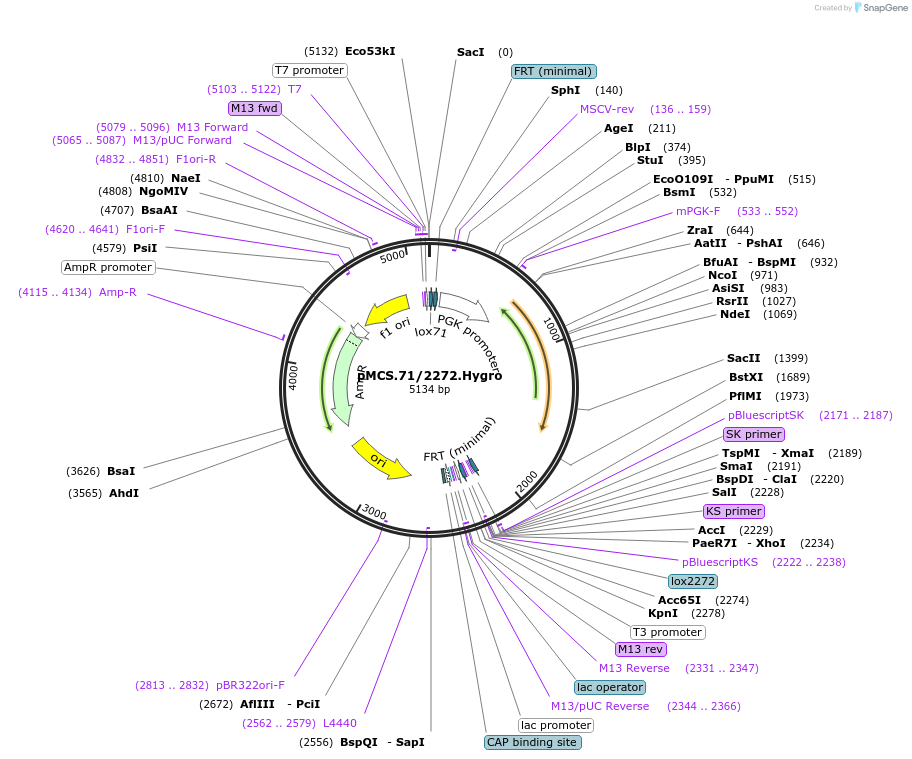-
Depositing Lab
-
Sequence Information
Ordering
| Item | Catalog # | Description | Quantity | Price (USD) | |
|---|---|---|---|---|---|
| Plasmid | 22731 | Standard format: Plasmid sent in bacteria as agar stab | 1 | $89 | |
Backbone
-
Vector backbonepBluescript KS+
-
Backbone manufacturerStratagene
- Backbone size w/o insert (bp) 3060
-
Vector typeCre/Lox
-
Selectable markersHygromycin
Growth in Bacteria
-
Bacterial Resistance(s)Ampicillin, 100 μg/mL
-
Growth Temperature37°C
-
Growth Strain(s)DH5alpha
-
Growth instructionsDH5alfa, XL1-blue, or other competent bacterial cell line
-
Copy numberHigh Copy
Gene/Insert
-
Gene/Insert nameLox71-FRT-PGK-hygro-FRT-Lox2272
-
Insert Size (bp)2074
-
MutationThis is a basal exchange vector for RMCE. The vector contains flrted pgk-hygro insert between heterotypic LoxP sites: Lox71 and Lox2272.
Cloning Information
- Cloning method Restriction Enzyme
- 5′ cloning site Sac1 (not destroyed)
- 3′ cloning site Kpn1 (not destroyed)
- 5′ sequencing primer T7
- 3′ sequencing primer T3
- (Common Sequencing Primers)
Terms and Licenses
-
Academic/Nonprofit Terms
-
Industry Terms
- Not Available to Industry
Trademarks:
- Zeocin® is an InvivoGen trademark.
Depositor Comments
Please note that the plasmid names and lox sites have been corrected since publication.
These plasmids were created by your colleagues. Please acknowledge the Principal Investigator, cite the article in which the plasmids were described, and include Addgene in the Materials and Methods of your future publications.
-
For your Materials & Methods section:
pMCS.71/2272.Hygro was a gift from Mark Magnuson (Addgene plasmid # 22731 ; http://n2t.net/addgene:22731 ; RRID:Addgene_22731) -
For your References section:
Quantification of factors influencing fluorescent protein expression using RMCE to generate an allelic series in the ROSA26 locus in mice. Chen SX, Osipovich AB, Ustione A, Potter LA, Hipkens S, Gangula R, Yuan W, Piston DW, Magnuson MA. Dis Model Mech. 2011 Jul;4(4):537-47. doi: 10.1242/dmm.006569. Epub 2011 Feb 14. 10.1242/dmm.006569 PubMed 21324933







